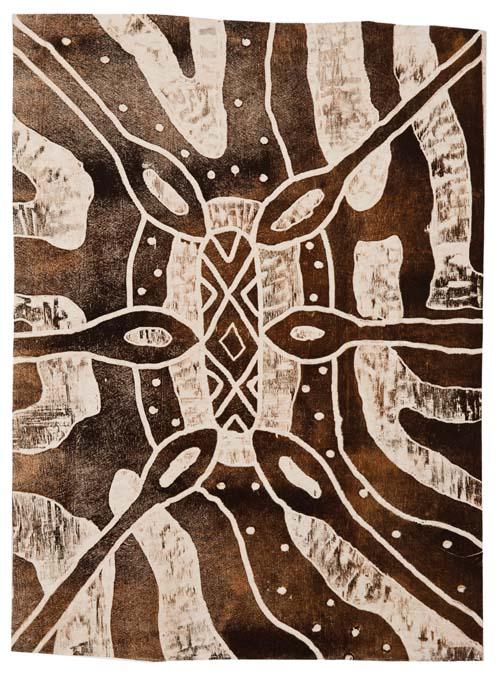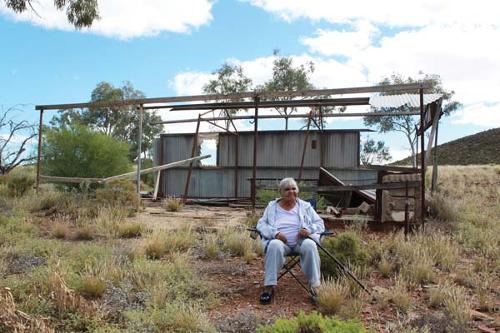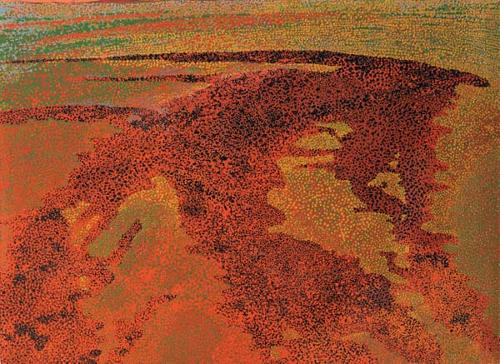
Fernando do Campo is perpetually on the move, until recently managing the vibrant ARI, Sawtooth, in Launceston, undertaking a residency at the Cité Paris studio, and completing a JUMP Mentorship with Paul O'Neill in London. His playful and unashamedly decorative exhibition surveys these last three years. The relationship of form and process to language is brought out in its title, Onomatopoeia, referencing the formation of a word resembling the object or action that it names or, in this case, the work of art resembling (or, in fact, being) the process by which it has been achieved.
The work is guided - although not constrained – by three concerns: the ongoing redefinition of the field that is painting, and the question as to what painting might be; the recycling and adaptation of materials; and the setting up of rules and parameters by which to work.
It is in the "rules and parameters" that do Campo’s interest in the work of Sol le Witt is revealed, as he echoes (yet refrains from mimicking) Le Witt’s sequential processes, the trend towards austerity and the decision making in the advance of what Le Witt called the “perfunctory affair” that is the execution of the concept at hand. The use of parameters also reflects do Campo’s interest in architecture. Seemingly delimiting and restrictive, rules are always part of a pre-prepared brief for a work (whether or not that work involves others who might collaborate to 'build’ the work or ‘manufacture’ elements of it, or work as craftspeople to fashion related but individual objects). Talking with the artist, other references to architecture emerge: ideas of building and construction, of re-purposing and the luxury to be found in ‘”leftovers” from other processes and projects. There is also a joy in the decorative as a serious device drawing on varieties of folk practice and on his childhood experience of South America.
Titles are important: Limiting my vocab, even Staying true are reminders of the rules and the discipline these impose. The ambitious 20 found colours (twice) comes closest to demonstrating do Campo’s concerns. Taking 20 ‘found’ or donated colours and a single borrowed item (a large gilt frame courtesy of the local museum) as core ingredients, he presented a series of objects. These include paint on various grounds; a copy of the museum frame, decorated in strong, almost ‘primitive’ patterns; a vignetted video of the artist at work as well as details of the works themselves, projected in the exact proportion of the borrowed frame; and three dimensional floor-works using the templates that provided the tessellated patterns of the paintings. Perhaps more visually unified is I like dancing, a flight of brightly-painted irregular forms spinning out across the gallery wall, each object patterned and yet part of a larger whole, another tessellation.
The artist’s deliberate references to tessellation acknowledge both the single “tile” and the whole “floor”, as achieved through the variations and rules of patterning. Other rules employed relate to collage, not just in the notions of juxtaposition and arrangement but also by the use of unifying lines and colours, and the play between these and their support, be that wall, paper, corrugated cardboard. The use of spray paint and stencils is extended in the process of recycling and re-use of elements, where the stencil overspray becomes the exterior or delineator of an object. This cycle of making is most clearly demonstrated in the diptych forms such as Existing shapes (second picture series), previously seen at First Draft Gallery in Sydney. Here this work is better situated within the context of more complex projects that, through scale or variety, capably inhabit the gallery space.
This survey of three year’s output demonstrates a consistent and intelligent development that lays the groundwork for Fernando do Campo’s next move, to Europe working as a guide at the Australian Pavilion during the Venice Biennale, followed by a three-month residency in Vienna.












